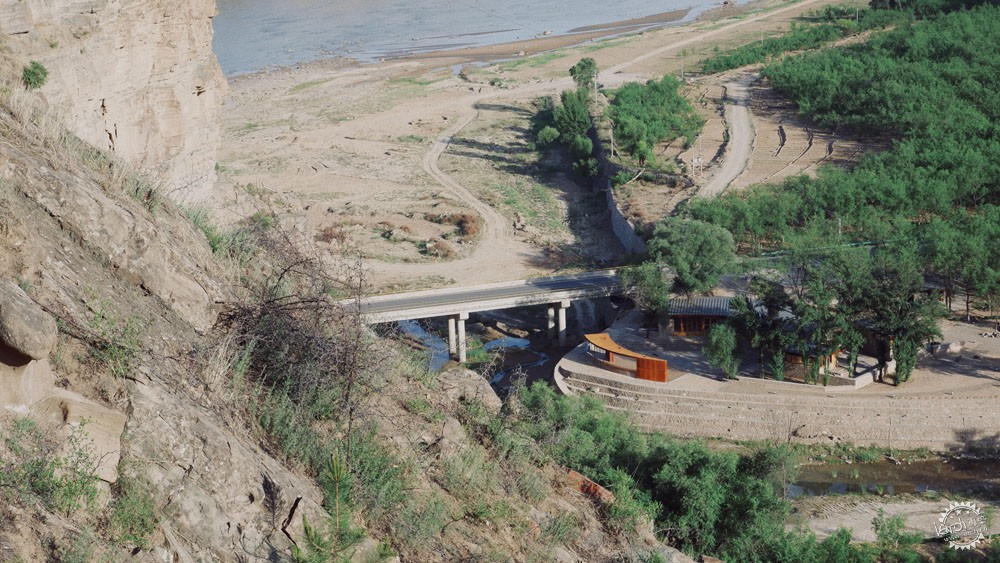
鸟瞰图
JUJUBE ORCHARD STATION—BETWEEN GATHERING AND SCATTERING
随着近代黄河水运交通的没落,陕北沿黄崖壁间曾经辉煌的窑洞村落沦为偏远之境,凋敝落寞。而近年沿黄公路的建设为这些古老的村落迎来了新的契机,沿路“驿站”的设计不仅为道路交通提供便利,更将成为老村对外的“触角”以及城乡生活的“聚集地”。这种新建筑类型如何因借山林之势,满足与激活城乡多元功能,营造一方自然的当代聚落成为设计的目标。
With the decline of Yellow river transportation in modern times, the glorious cave dwelling village along the precipice in Northern Shaanxi has become a remote place, desolate and lonely. In recent years, the construction of the highway along the Yellow River has ushered in new opportunities for these ancient villages. The design of the "post station" along the road not only facilitates road traffic, but also becomes the "antenna" of the old villages and the "gathering place" of urban and rural life. How to satisfy and activate the multiple functions of urban and rural areas and create a natural contemporary settlement of one side by taking advantage of the situation of mountain forests has become the design goal of this new building type.
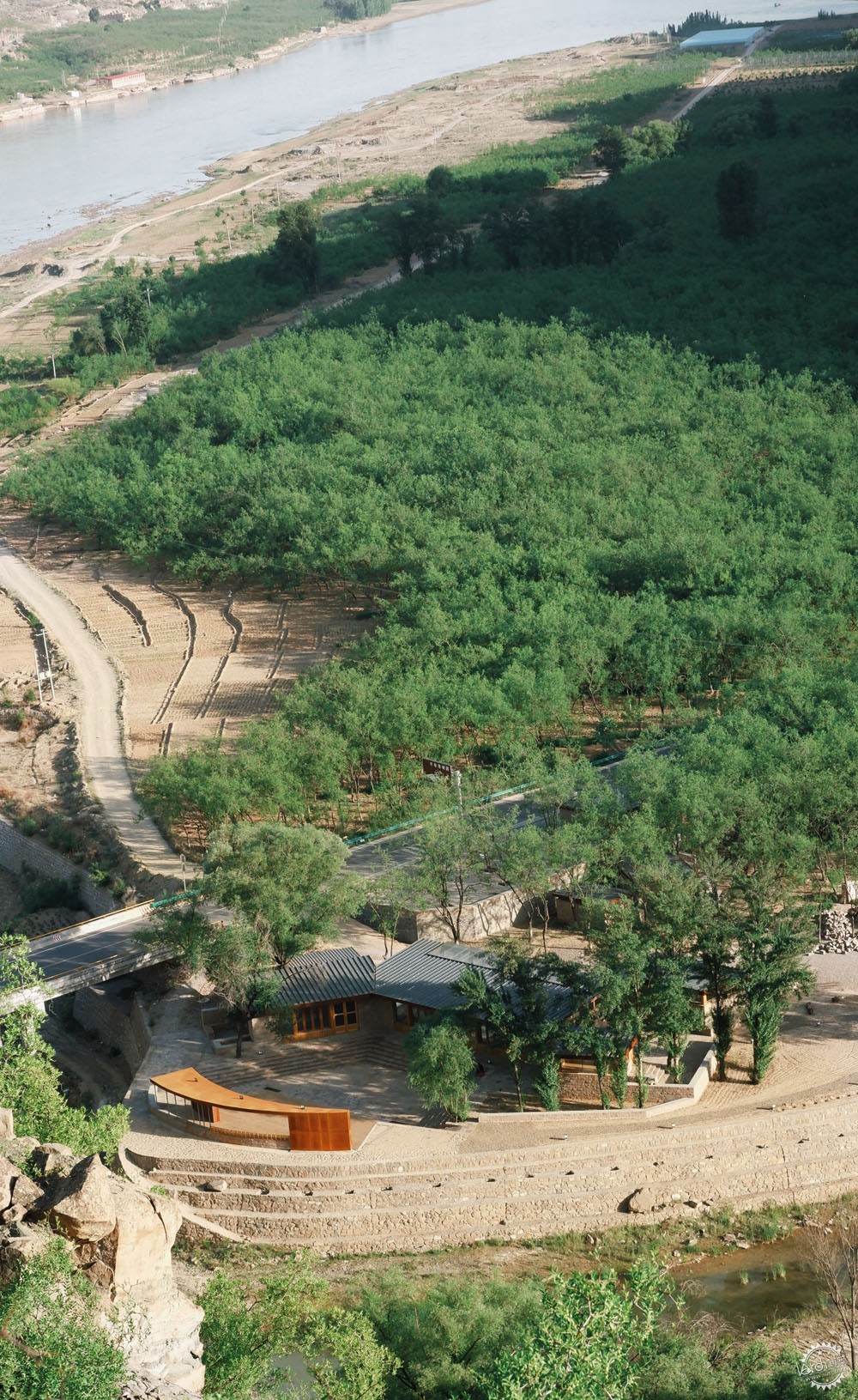
鸟瞰图
放大的驿站
从政府层面看,沿路“驿站”的建设初衷为沿黄公路村落的交通旅游服务配套,包含停车场、店铺、公共卫生间三种基本功能。而老村保护区内山地窑院用地紧张,泥河沟村民们则一直希望在这块村里为数不多的枣林开阔地建个大戏台广场以及容纳两百人的红白理事馆,不干扰村内的生活。
面对城乡的差异需求,借助村口驿站建设的机遇,在老村外集中建设功能互补的城乡服务空间,将驿站的功能放大到餐饮、茶室、戏台广场、红白喜事甚至临时的红枣市集等,它成为偏远的泥河沟村对外的触角,同时也是乡村公共生活的集聚场所。而在泥河沟这处拥有全球重要农业文化遗产(GIAHS):“佳县古枣园”的传统村落,众多功能集合的建筑空间,在村里无疑将成为一种新的公共建筑类型。这处“放大的驿站”如何轻微地置入村口参差的枣林间、自然建造,成为设计面临的首要问题。
A ENLARGED POST STATION
From the point of government, the construction of the "post station" along the road is intended to provide a complete set of traffic and tourism services for the villages along the Yellow Road, including three basic functions: parking, shop and public toilet. However, the old village reserve are short of land, The villagers of Nihegou have been hoping to build a grand stage square and a Wedding and Funeral Banquet Hall with 200 people in the jujube forests, so as not to interfere with the life of the village.
In the face of the differences between urban and rural areas, with the opportunity of "post station" construction, the service spaces with complementary functions are concentrated outside the old villages. The functions are enlarged to restaurants, teahouses, stage squares, banquet hall, and even temporary jujube Market. It becomes the remote tentacles of the Nihegou village, and also a gathering place for rural public life. In Nihegou, a traditional village with the world's important agricultural and cultural heritage (GIAHS): "Jiaxian ancient jujube garden", many functional building spaces will undoubtedly become a new type of public buildings in the village. How to slightly place this "enlarged post station" among the jujube forests with different village entrances and build it naturally has become the primary problem faced by the design.
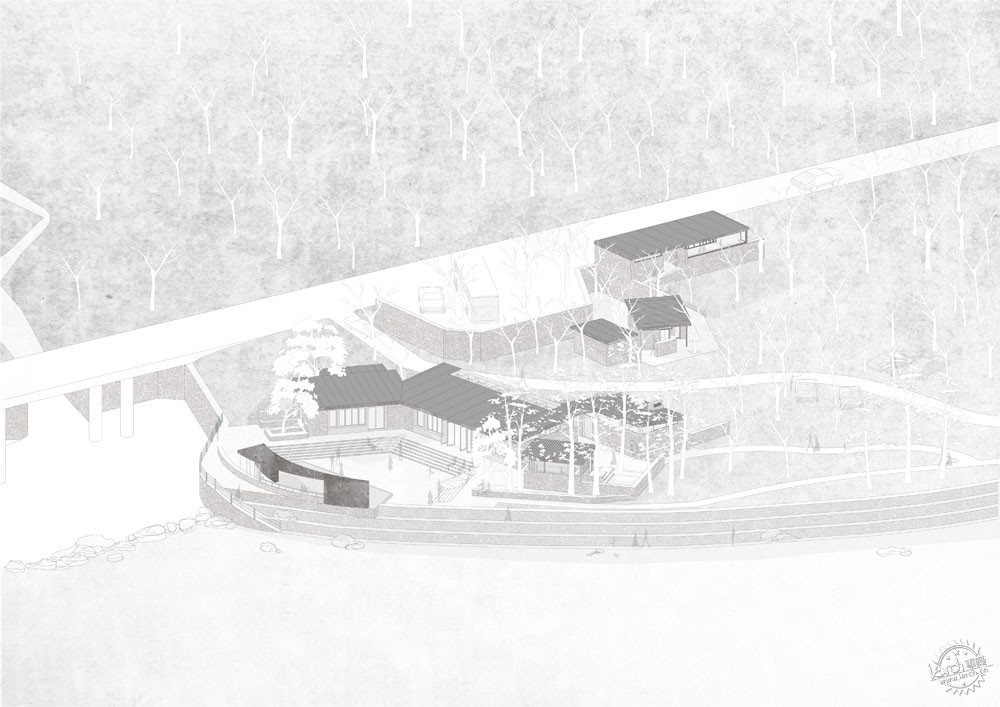
驿站示意图
消散的建筑
村口临近沿黄公路一侧唯有两山夹壁间一片枣林地,流经村内的车会河环绕汇入黄河。从公路到枣林河道边缘有近三米阶梯状落差,而枣林河道边新修的防洪堤又有四米高差,以防每年夏秋之际的山洪暴发。基地里成片参差不齐的枣树林,是村里的主要经济作物,每棵枣树都有自己的主人,土地的认定和赔偿也以枣树为准。而枣林边缘夹杂的榆树、杨树等乔木亦是村落生物多样性的重要保障。在此,因地制宜地利用地形高差与林木间距,将建筑空间打散在林中成为首选策略。
DISPERSED BUILDING
On the side of the road along the Yellow Road, there is only one jujube woodland near the new road. From the highway to the edge of River, there is a step-like drop of nearly three meters, while the newly built flood control dike along River has a height difference of four meters, in order to prevent the mountain flood outbreak in summer and autumn every year. The uneven jujube forest in the base is the main economic crop in the village. Every jujube tree has its own owner. The identification and compensation of the land are also based on jujube. Ulmus, poplar and other trees on the edge of jujube forest are also important guarantees of village biodiversity. In this regard, it is the preferred strategy to disperse the building space in the forest by taking advantage of the topographic elevation difference and the spacing between trees according to local conditions.
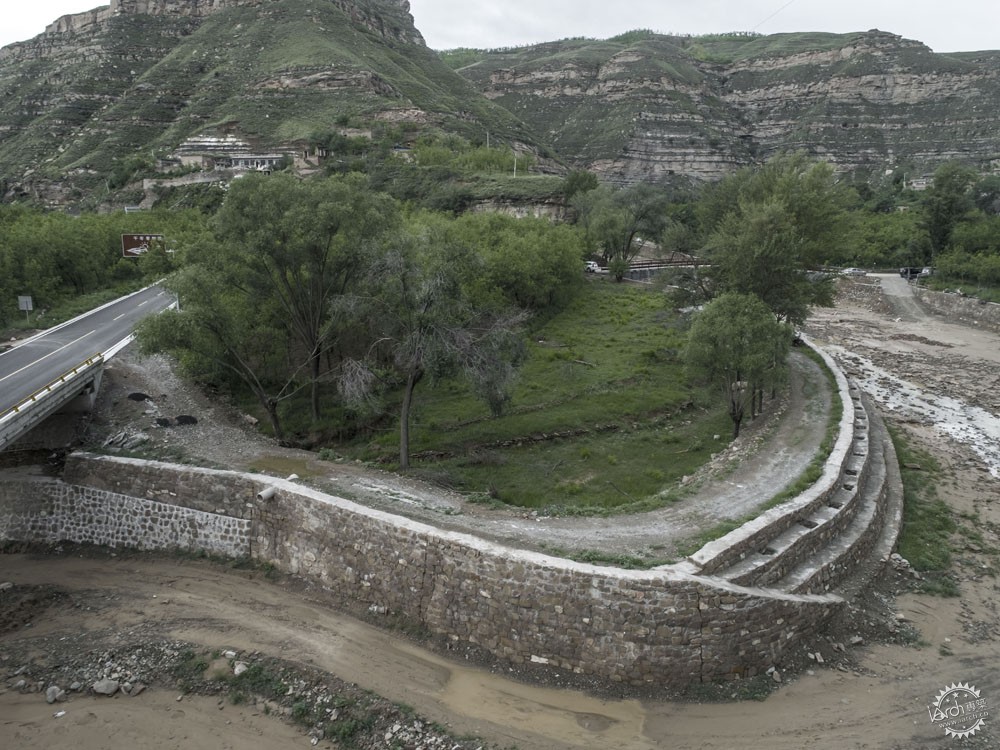
建设前
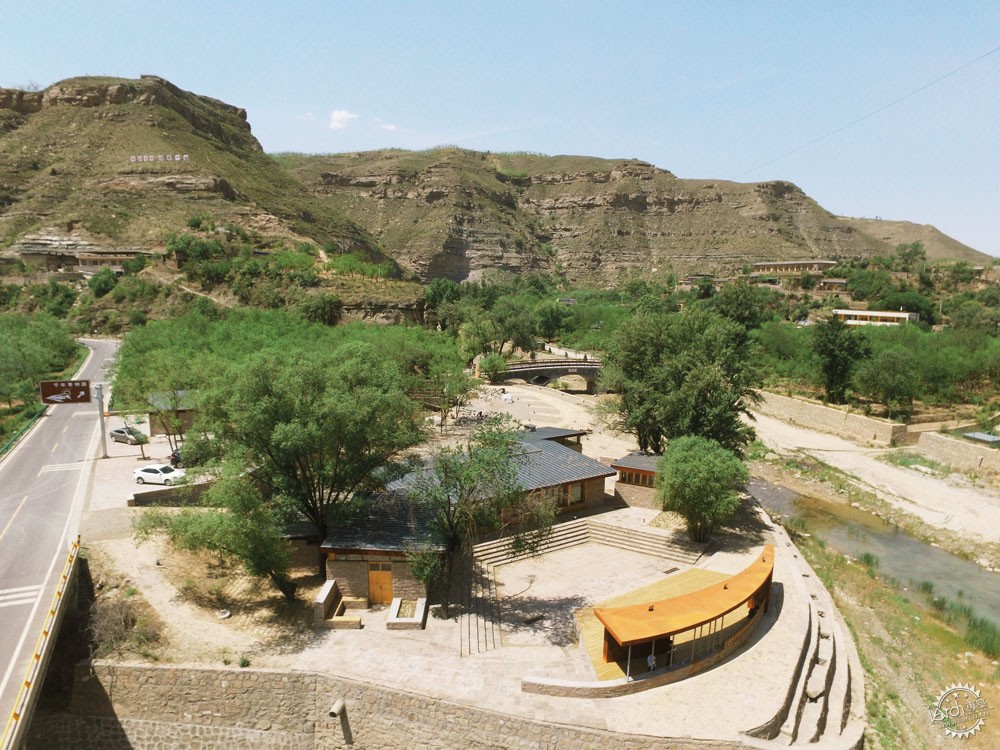
建设后
驿站广场的规划设计从相地立基开始。避开南侧村入口枣林密集区及观音庙保护区域,保持村口枣林自然进入的氛围,将驿站建筑群主体置于枣林北侧林木稀疏处,毗邻村河道弯曲开阔处的狮山崖壁下,以本地石、木为主料,嵌于枣林与防洪石堤之间。利用路、林、河堤间高差广狭,定其间进、因树就屋,随曲合方,将建筑还原为基本空间单元,弱化体量,将之消散在枣林间。在参差草木间营造自然的当代聚落,既保护村口的枣林原貌又得一方自在天地。
The planning and design of the station starts from the measure land. To avoid the southern jujube densely populated area and the Guanyin Temple conservation area, to maintain the natural atmosphere of the jujube forest in the village, the main building of the station should be placed on the sparse side of the north jujube forest, and next to the Shishan cliff under the bend of the river near the village. The height difference between roads, forests and river embankments is wide and narrow, so that the buildings can enter and be built by trees. The buildings can be reduced to basic space units along the curve, so as to weaken the volume and disperse it among jujube forests. Building natural contemporary settlements among the forests not only preserves the origin of the village entrance, but also obtains another small world.
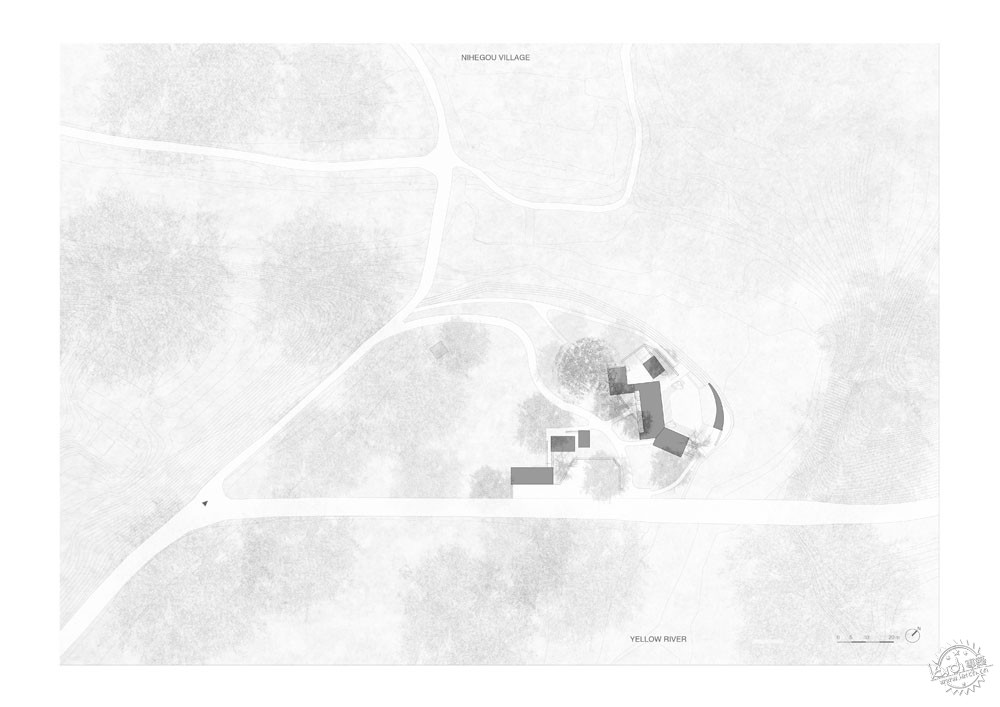
驿站总平图
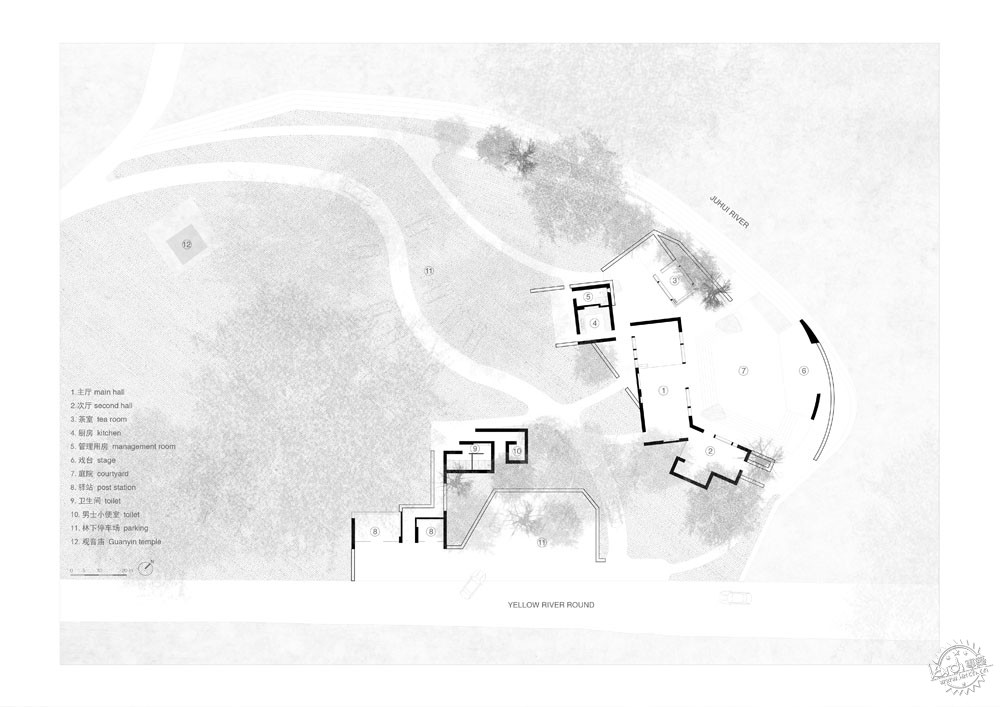
驿站平面图
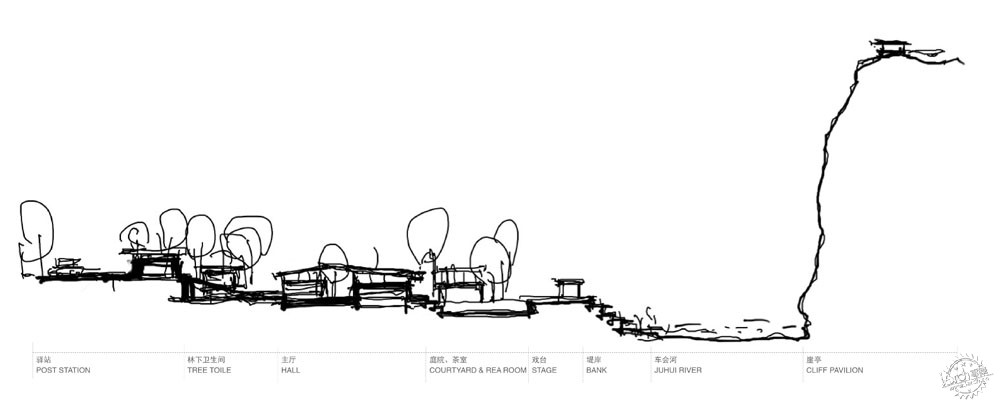
驿站剖面图
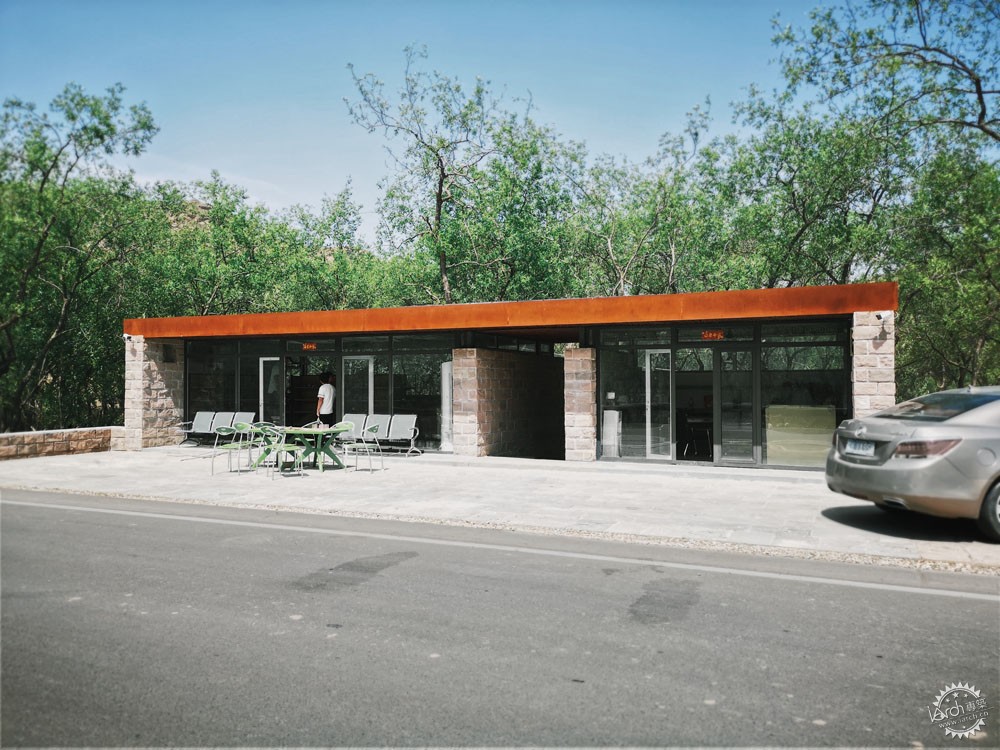
驿站店铺
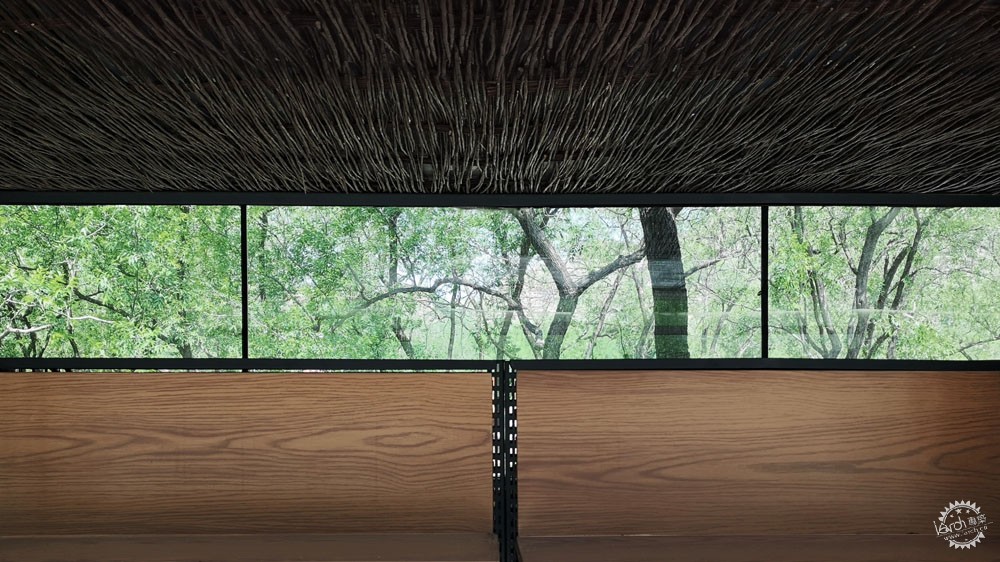
驿站店铺及室内,深褐色柳编屋顶下,横向长窗框景枣林,增强购物体验。

店铺之间的“缝隙”,通向林下卫生间,诱入枣林
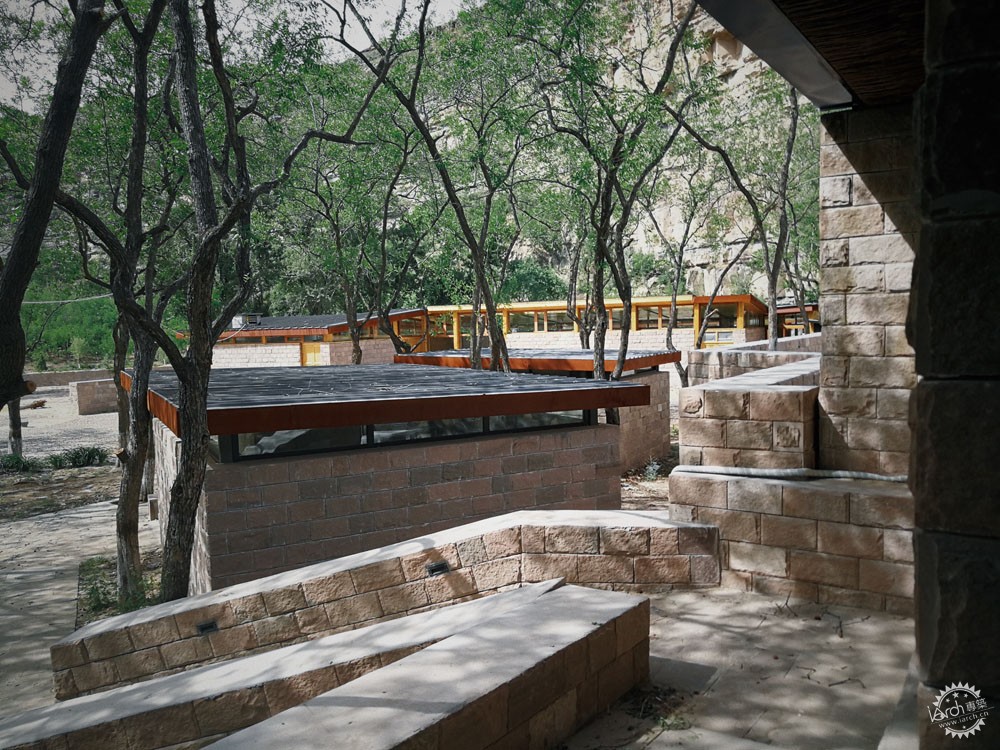
驿站坡道
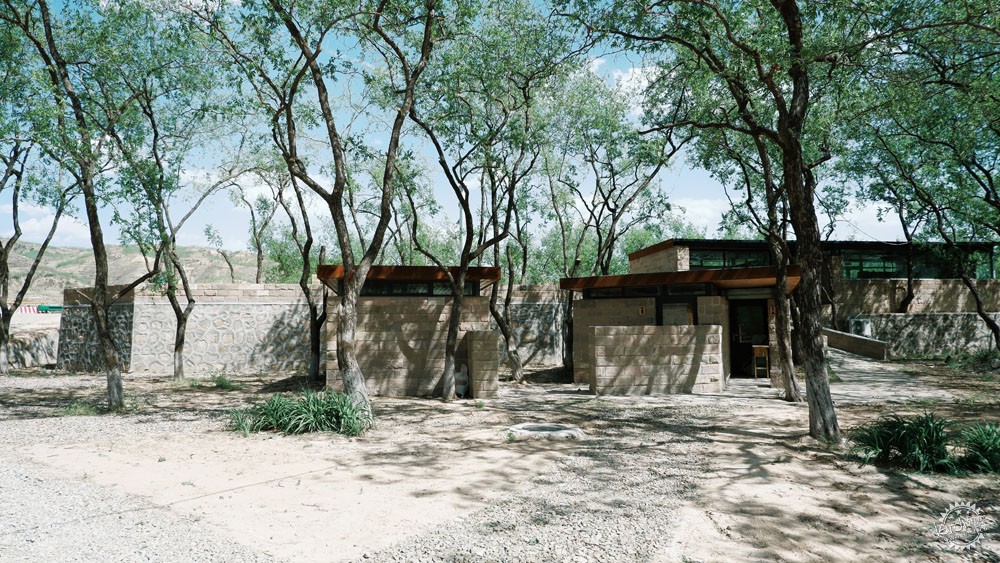
驿站厕所
乡野园林
在中国园林里,建筑是典型的单元类型化,主要结构与构造方式遵循基本形制,而其与路径、场所与情境的关系营造远胜于建筑本身。在乡村的场所营造中,如何借用中国园林巧妙的场所处理方式,又简约有效地融合本地技术、较低造价的现实需求?
为此,建筑的结构类型选用轻钢框架与当地特色的石墙、柳编工艺,压低墙体高度,上留高窗,采光通风,同时可以纳入树林景观。他们的单元化体量在林间不仅分散,又因行为功能而局部聚合, 成为枣林乡野园林空间的新体验模式。
A Country garden
In Chinese gardens, architecture is a typical unit type. The main structure follow the basic form, and its relationship with the path, place and situation is more important than building itself. How to borrow the ingenious way of dealing with Chinese gardens in the construction of rural venues, and effectively integrate the actual demand of local technology and lower cost? For this reason, light steel frame and local characteristics of stone wall and willow weaving technology are selected to reduce the wall height, leave high windows, lighting and ventilation, and can be incorporated into the forest landscape. Their unitary volume is not only scattered among the forests, but also partially aggregated due to their behavioral functions, which has become a new experience mode of rural garden space in jujube orchard.
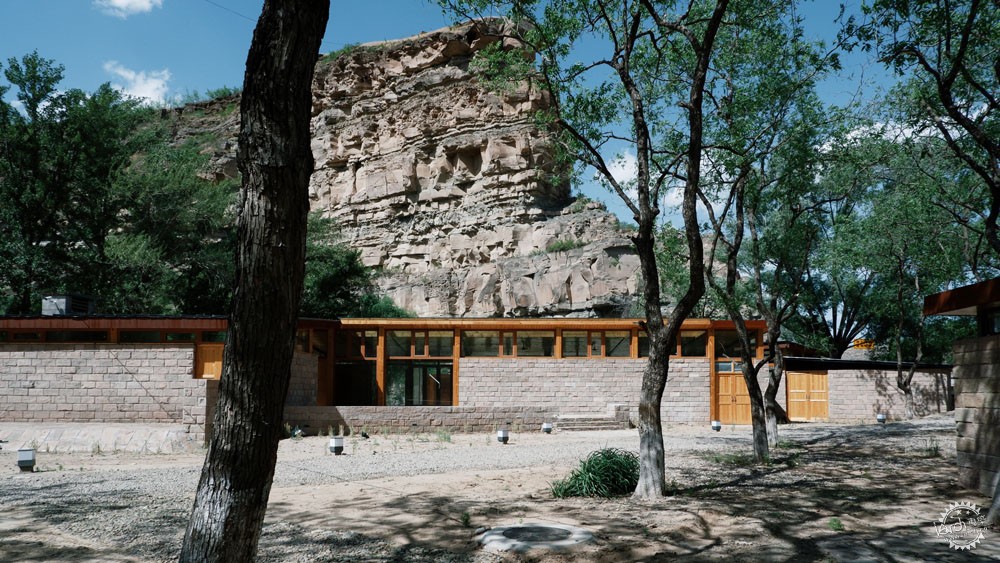
活动中心
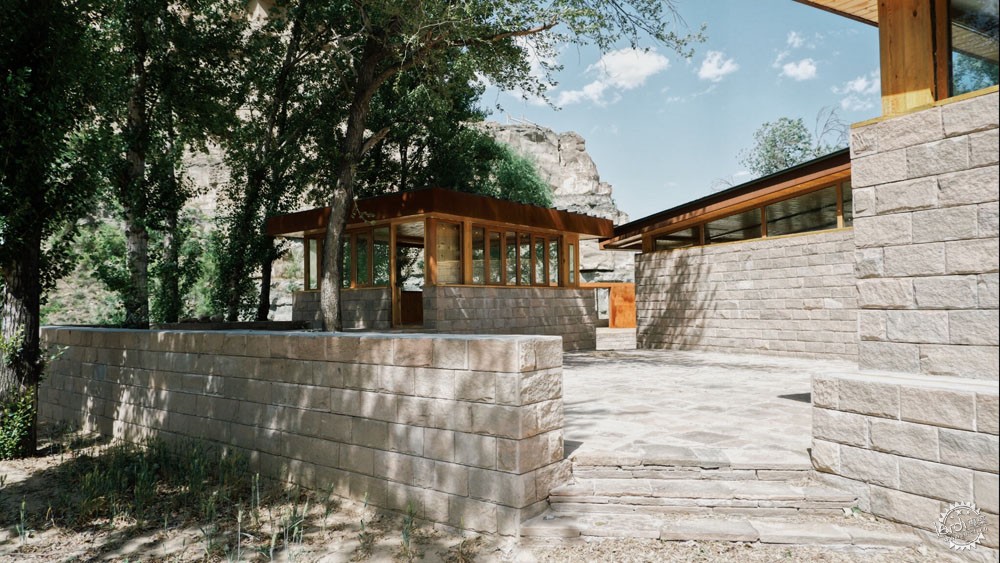
夹缝入口
“驿站店铺石基高筑,前抵沿黄路;大小两间,中开虚缝,后连石砌坡道,漫步入林间聚落,景物随机,高下相成,抵至林下方间石厕,树影婆娑,正是五谷轮回之所。若有兴致,亦可沿林间石道折入驿站内院小憩。高台茶室、观景餐厅、大灶厨房大小数间,离合相间、随势高低、曲折为院。院中石阶剧场、石堤戏台自成一体,槐荫当庭、崖壁为屏,虚实相生。借黄河崖壁的壮阔背景及滨水河道的自然风光,闲散天地间,再造一处‘北方山水聚落’”。
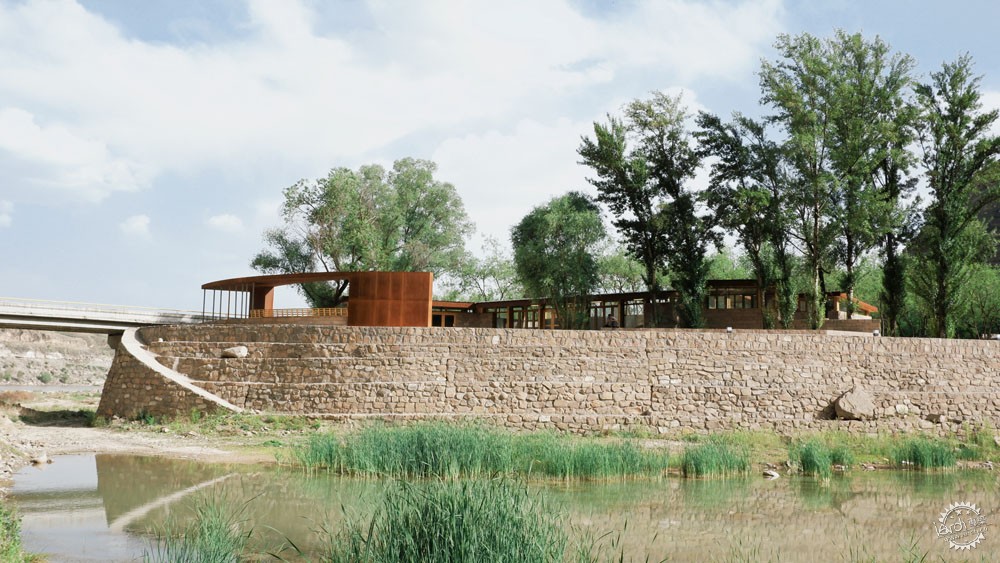
村内河道
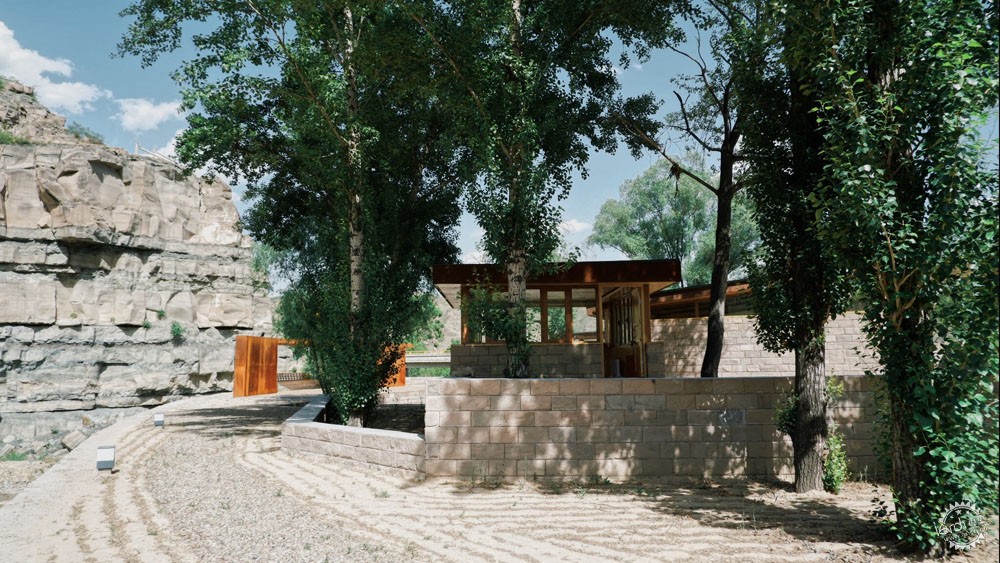
沿堤入口
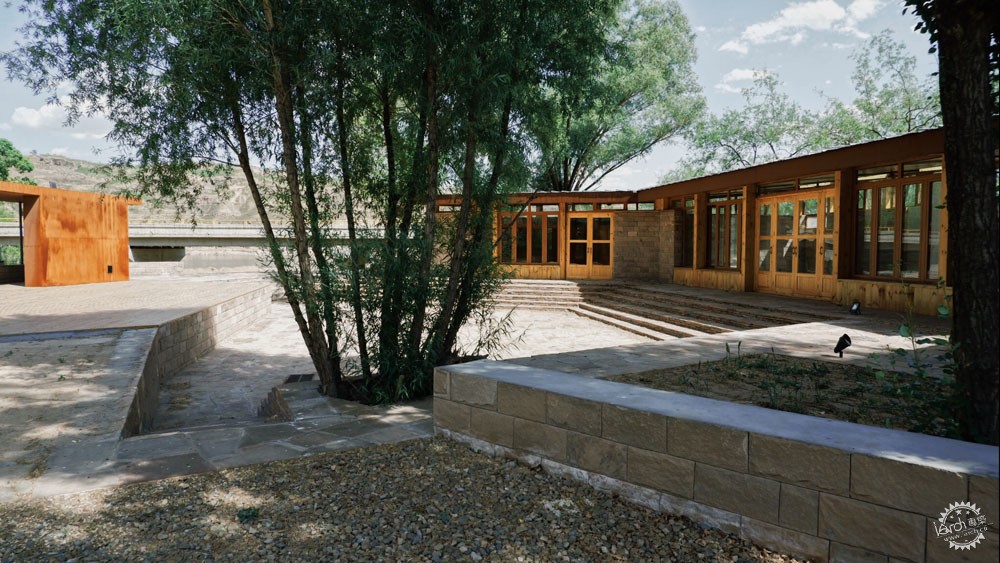
石阶庭院
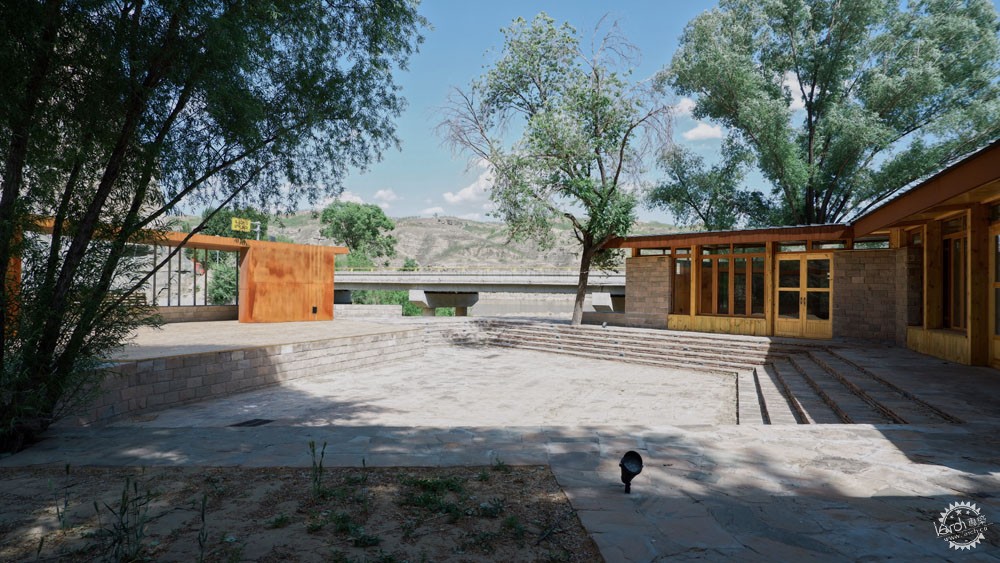
石阶庭院
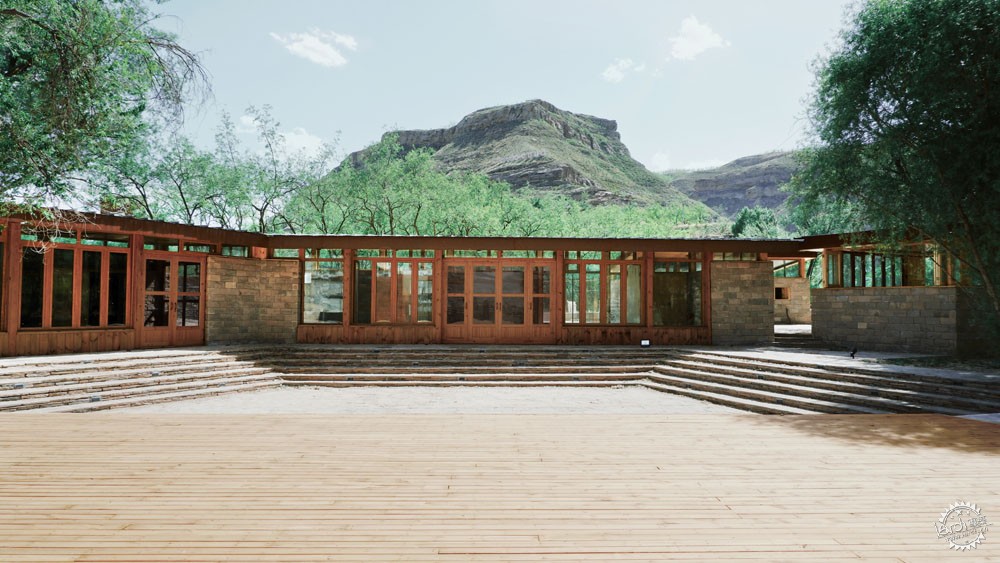
石阶庭院
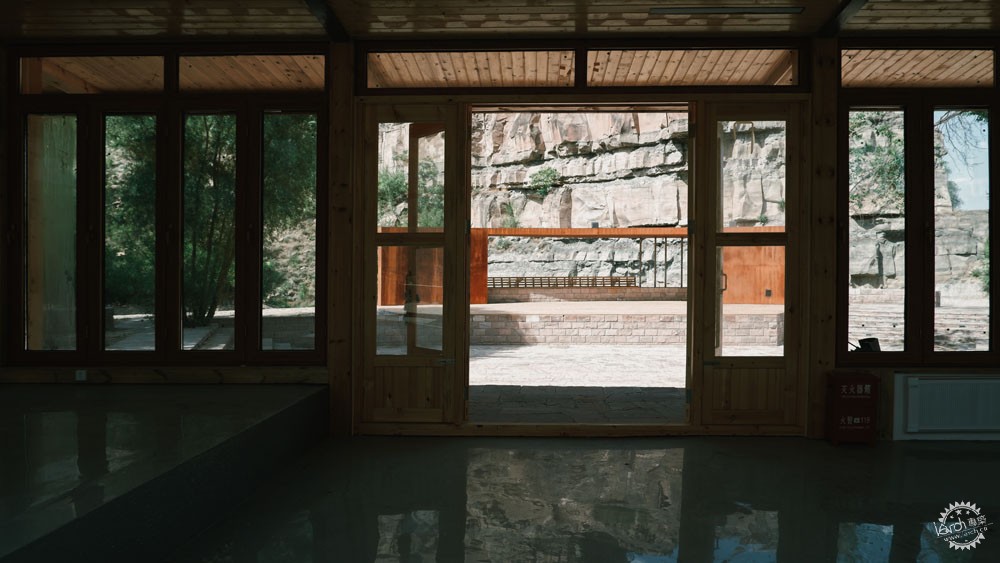
庭院戏台
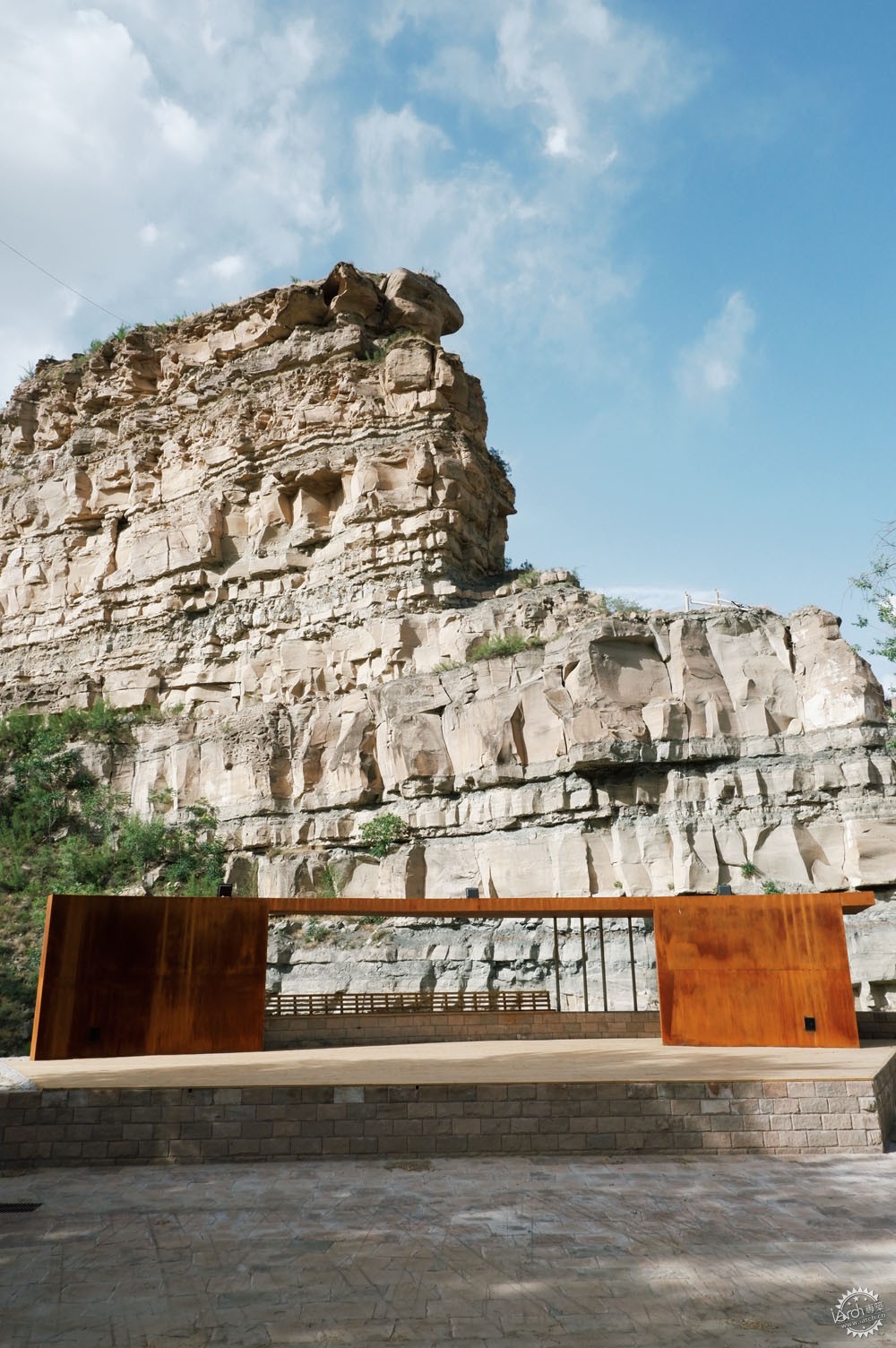
庭院戏台
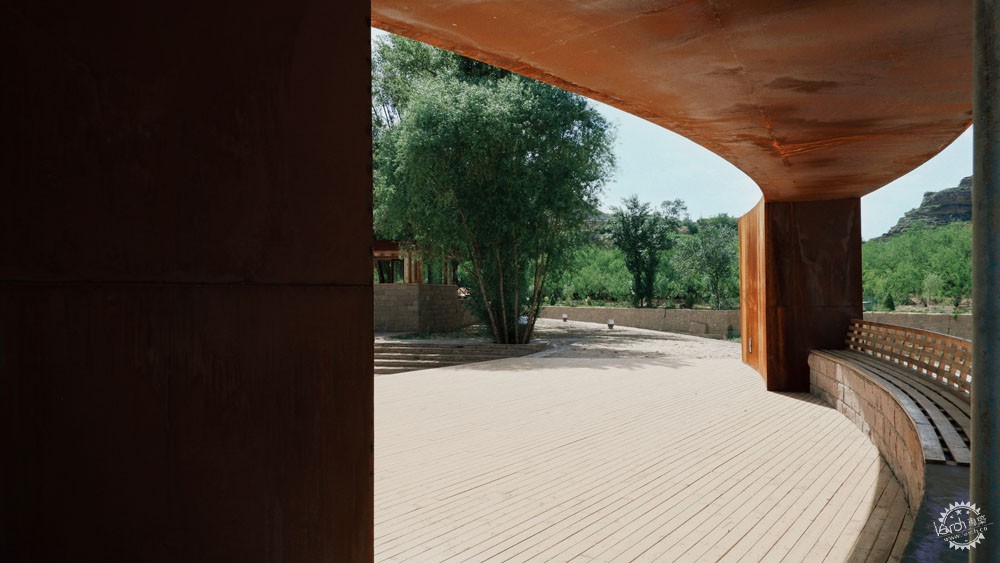
庭院戏台
聚散之间
驿站戏台广场在原本的枣林凹地基础上转化为阶梯场地,将建筑单体空间聚拢,迎合陡峭的金狮山围而成院。所有房间均向内院戏台敞开,但因功能不同形成差异的内外空间氛围。主厅连接厨房,南开天窗,光线明亮;抬高的茶室,林木围绕,正对戏台广场,空间最为幽暗;即便管理用房的小窗也保证作为办公空间的舒适度和便利性。
BETWEEN GATHERING AND SCATTERING
The square was transformed into a staircase base on the original jujube forest concave land, and the building monomer space was gathered to cater for the steep Golden Lion Mountain. All rooms are open to the inner theatre stage, but because of different functions, there are different space atmosphere. The main hall connects the kitchen with a South skylight and bright light; the elevated tea room is surrounded by trees, facing the stage square, with the darkest space; even the small windows of the management room ensure the comfort and convenience of the office space.

阶梯场地

阶梯场地
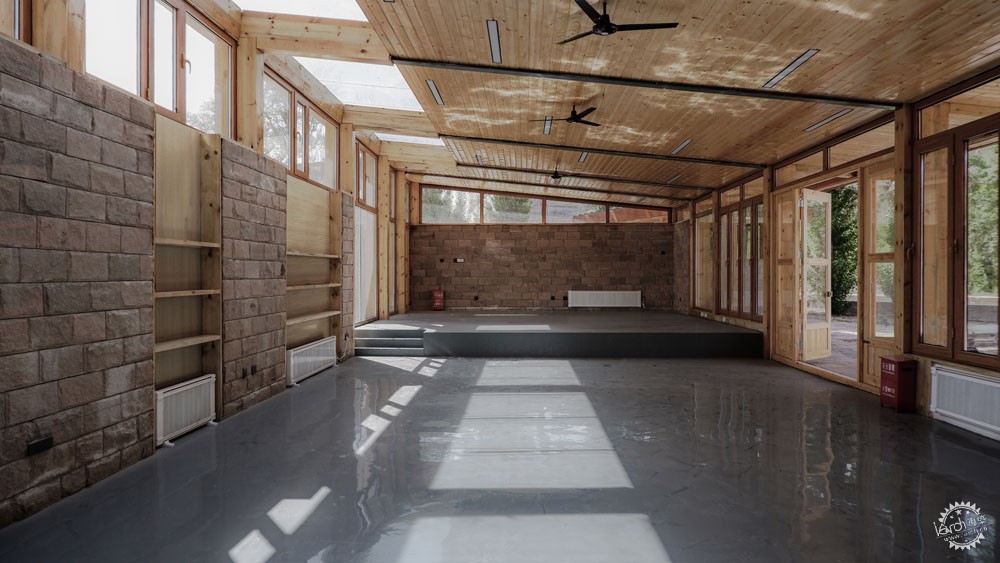
室内-主厅
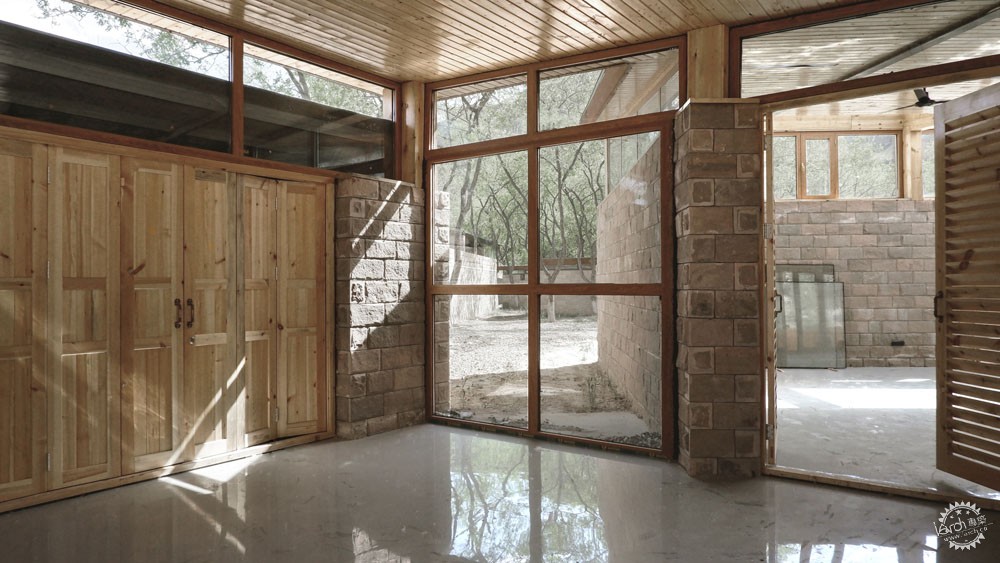
室内-次厅
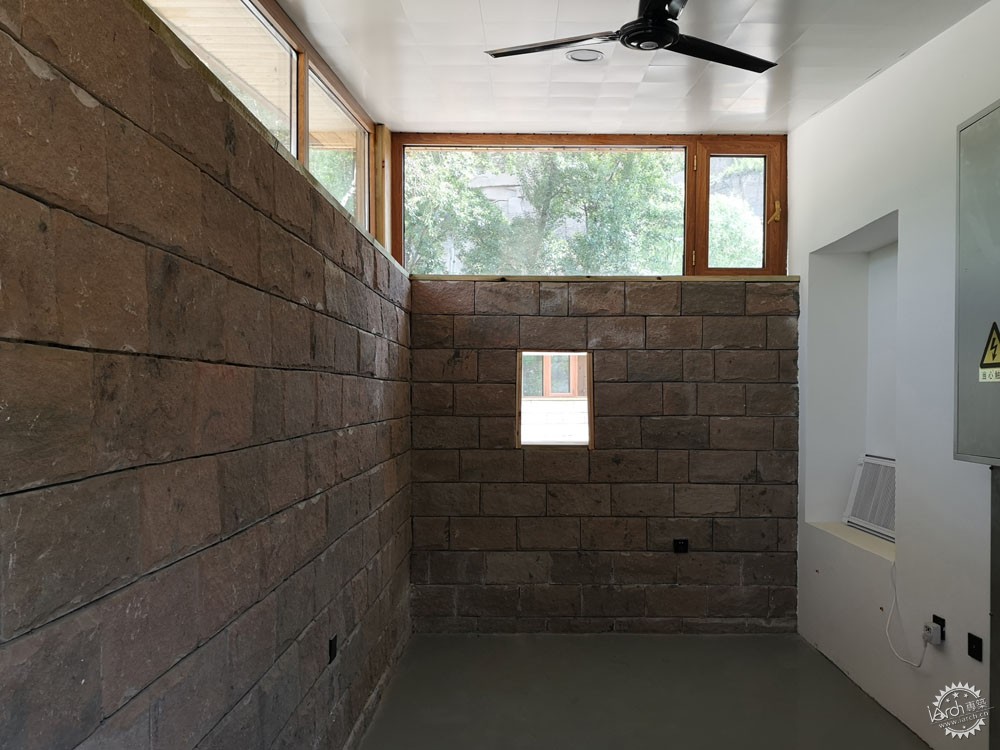
管理用房
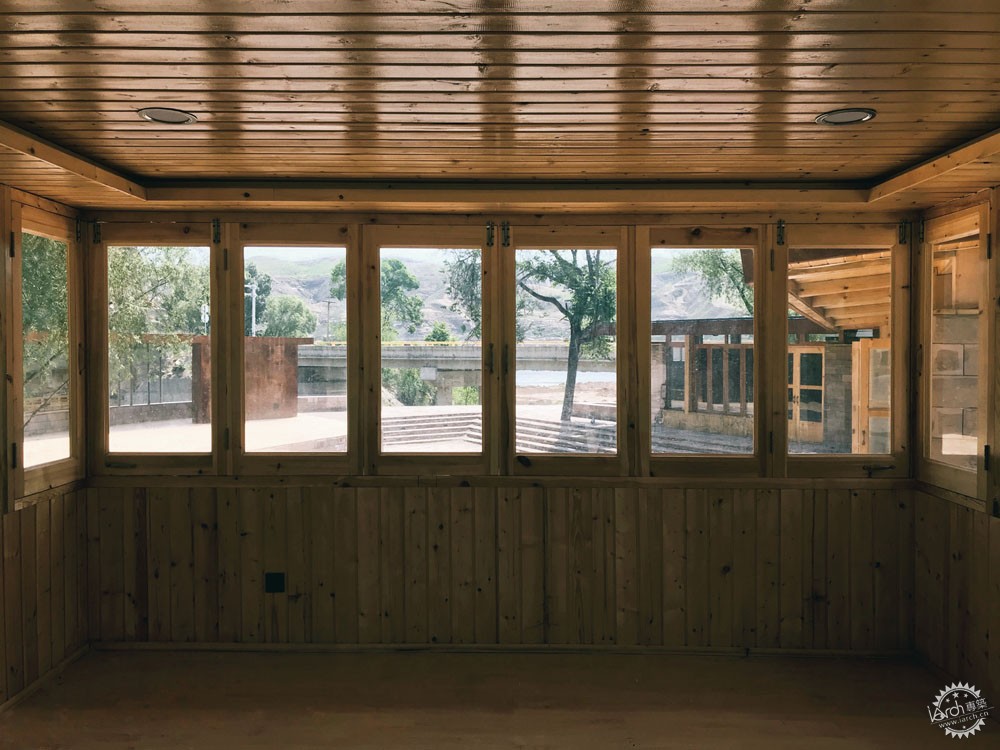
茶室

茶室

茶室
这种差异的单元空间氛围,类似南宋牧溪的《六柿图》,虚实不同的六颗柿子,被搁置在一块无形无边界的平面上,看似随意散落实又似精心聚合,之间的层叠或缝隙差异带来诸多微妙的想象。
Similar to the "Six Persimmons painting " of Muxi in Southern Song Dynasty, the six persimmons with different virtual and real are placed on an invisible and boundless plane, seemingly scattered and implemented at random, and seemingly gathered meticulously. The overlapping or gap differences between them bring many subtle imaginations.
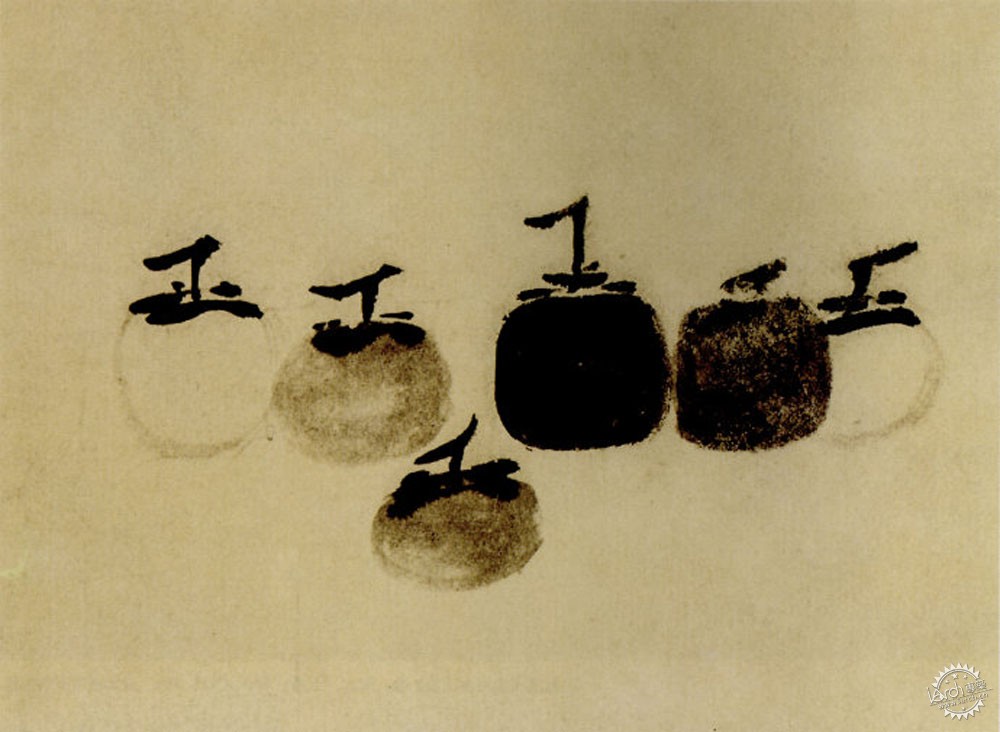
《六柿图》
相对空间的聚散,时间和行为上的轮回反复或许是乡村更真实的日常。乡村大多数日子是宁静而重复的日常,驿站广场承载着村口要道的休闲坐望;当节庆、喜事之际,乡亲们在驿站广场共聚一堂,崖壁为屏,聚首当歌之时,激发出村民的澎拜心情,这是村子凝聚的重要时刻。
Relative space gathering and dispersing, time and behavioral reincarnation may be a more real daily life in the countryside. Most of the days in the countryside are quiet and repetitive, and the square provide the leisure sitting and watching of the main road at the village entrance. When festivals or other events come, villagers gather in the Plaza. The huge cliff seems on screen, with the singing, inspiring their mood of worship. This is an important moment for village cohesion.
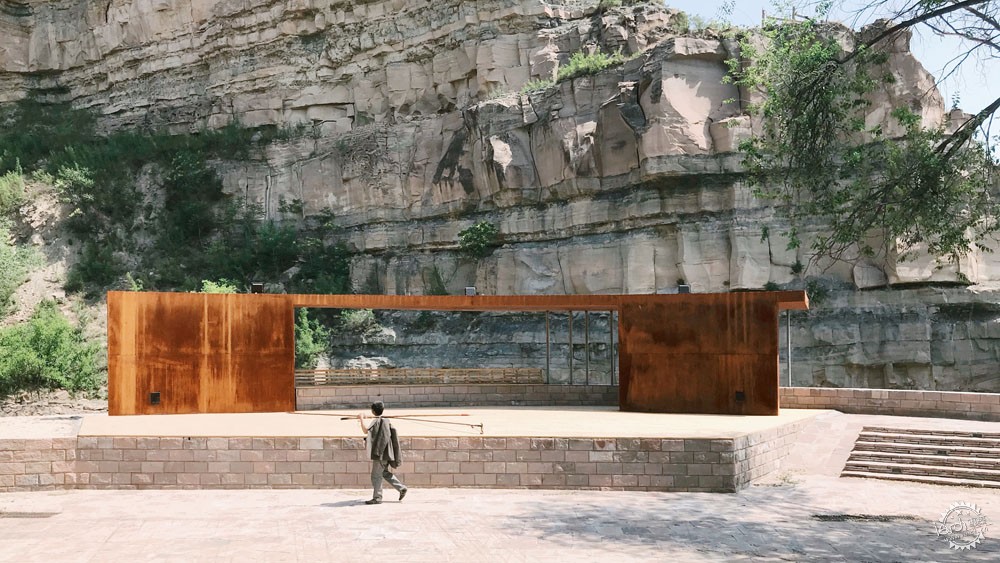
庭院戏台
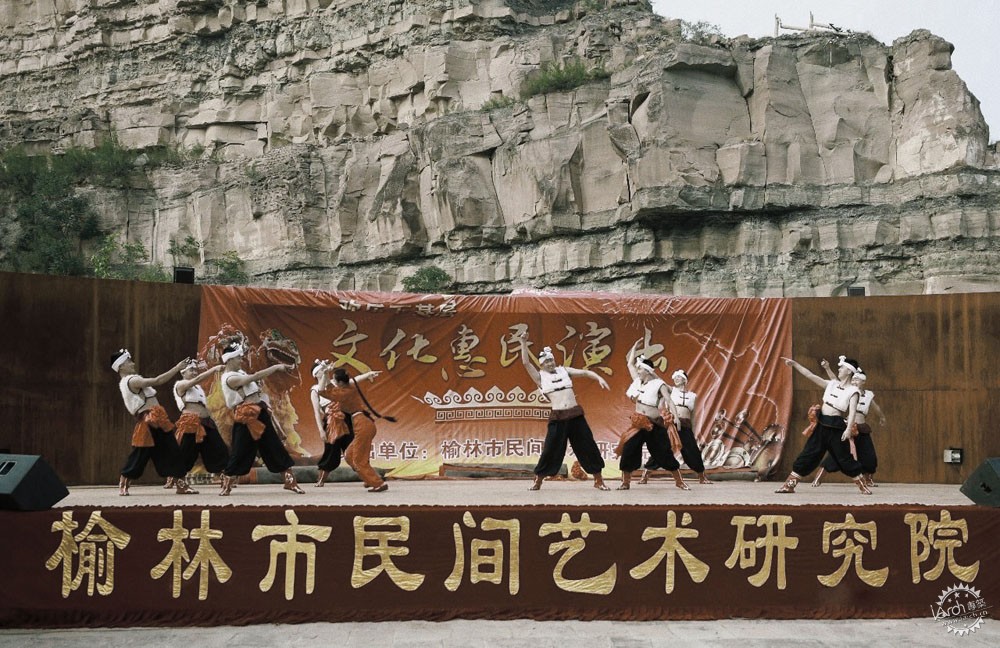
活动中的戏台

活动中的庭院
面对大山大河,或喜或悲,这种聚集的仪式在漫长的日子里为数不多,但在古老的村落中更不可或缺。枣园驿站以聚落的空间散落林间,静静承载着古村落生活的聚与散。
In the face of mountains and rivers, or joy or sorrow, this gathering ceremony is rare in the long days, but even more indispensable in the ancient villages. The jujube orchard Post Station scatters among the forests in the settlement space, quietly carrying the gathering and scattering of the ancient village life.

项目名称:枣园驿站
项目地点:陕西佳县泥河沟村
建筑面积:476m2
设计单位:原本营造
主持设计:唐勇
建筑设计:林艺苹、杨秉鑫、赵沛、王博
结构设计:罗敏杰
机电设计:姜海鹏、韩亚征
照明设计:丁志强
施工单位:西北秦龙建筑工程有限责任公司佳县分公司
现场负责:尚生雄
技术负责:张艳伟
设计时间:2017.5-2017.8
竣工时间:2019.8
摄 影:林艺苹、杨秉鑫、陈瑜
来源:本文由原本营造提供稿件,所有著作权归属原本营造所有。
|
|
